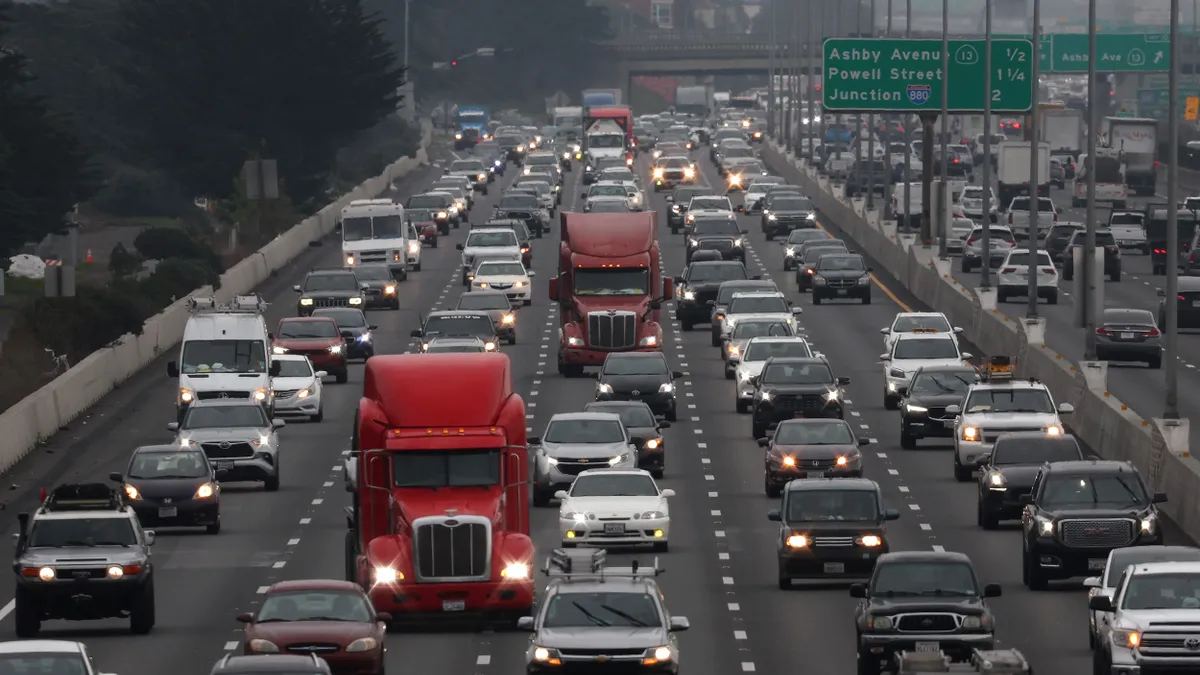A neighborhood in Helsinki, Finland wants to give a precious commodity back to its residents: an hour a day.
"The most valued thing is time," said Veera Mustonen, program director for Smart Kalasatama. "We don’t talk about time when we talk about smart cities enough."
Kalasatama, which means "fish port" in Finnish, broke ground in 2008 at the site of a former commercial harbor. The first inhabitants moved to the area in 2012 and about 3,000 people live there today. By the 2030s, 20,000 residents are expected to live in Kalasatama and 8,000 jobs are expected to be created.
Mustonen said Smart Kalasatama projects are centered around figuring out ways for residents to work, live and do leisurely activities nearby. Typical time-consuming city elements like transportation are being improved through innovations such as integrated apps and autonomous buses.
"Obviously smart cities aren’t about keeping everyone in the same spaces all the time," she added.
Kalasatama is also working on logistics solutions like figuring out ways to get groceries without leaving the house, deliver health services at home or close to home, and pilot preventive care services and peer-to-peer services where neighbors can share with each other. Kalasatama is even testing a flex-space service called Flexi which allows residents to reserve spaces for meetings, parties, pop-up events or any number of activities.
A major goal for all of Kalasatama's development work is resident participation, and many companies have been turning to citizens and workers in the area to help with project development and testing. More than 200 people from startups, companies, universities and the general public participated in the first round of smart city-related projects, many of which are created and tested in Kalasatama's Living Lab. The Lab, inspired by the European Network of Living Labs, fosters co-creation and encompasses locations like a newly-opened school and an upcoming social services and health care center.
"Obviously smart cities aren’t about keeping everyone in the same spaces all the time."

Veera Mustonen
Program Director, Smart Kalasatama
Additionally, the Kalasatama Innovators' Club encourages companies, startups and individuals to bring ideas to the table and test them out. Through this club, one resident developed a project to use digital tools that could help seniors get more physical activity. Mustonen said these types of digital devices and solutions might be Kalasatama's answer for more in-person experiences for residents, instead of division among them.
"When people have more time ... I believe they will [know] how to use that time in the neighborhood," Mustonen said.
Sparking new innovations
Kalasatama's first pilot projects with outside companies, chosen from a pool of 52 offers, ran in spring 2016. They covered mobility services, social services, effective waste management and food waste reduction.
The mobility pilot project was Tuup, a Finnish app that helps users get on public transit. For the Kalasatama test, Tuup looked into what ride-booking and car-sharing could look like in its app. They interviewed and workshopped wireframes with residents and got feedback that Johanna Taskinen, founder and development director of Tuup, said was helpful.
"If you want to have a proper car-sharing service that can be integrated into these applications like ours, the cars that exists in the area should be open to all people," she said. Current car-share programs live in parking garages that only residents of the building have access to, and the cars need to be on the street or technology needs to be built to let others into the garages.
While Tuup operates across Finland, it's also running an autonomous shuttle testing in Kalasatama. Taskinen said the project dovetails with what Tuup is trying to do outside of the development.
"It’s pretty much the same idea as the existing ride service," she said.
Overall, Kalasatama is working on five pilot projects including a sharing-economy parking service, smart electric-car charging stations, a solar power project, outdoor green walls and a gamification app that encourages energy-efficient and green living. Some projects are already in place, like a pipeline-based waste-removal system which sucks trash into the ground to get sent directly to a waste facility, removing the need for garbage trucks.
Additionally, IoT is integrated throughout the district, allowing residents to monitor their electricity use or shut devices off remotely with an app. When resident Petja Partanen moved to Kalasatama three years ago with his wife and son, being able to turn off a coffee pot from a different room was a novelty. But innovation begets the desire for more innovation.
"It’s not that exciting anymore," Partanen said. "I’m wanting more automation."
Partanan said his toilet once got stuck flushing, which sparked his wish for phone alerts that can notify when a device isn't working properly. He also mentioned that, while you can real-time track electricity, there is no historical data or ability to look at what's using power.
"It’s not that exciting anymore ... I’m wanting more automation."

Petja Partanen
Resident, Kalasatama
While most of Kalasatama's time-saving projects are still in the works, and Mustonen said it’s too early to measure how successful they have been, Partanen said he has already benefited. His son’s school is 150 feet from his apartment, making drop-off a trip that lasts no more than a few minutes. The common spaces in his building allowed him to give up his other work space and limit his commute to within his own building. And when he does want to go downtown, that's a quick trip, too.
"I don’t have to spend very much time commuting around the city," he said. "Normally I take my bike and it’s 10 minutes to the city center."



















